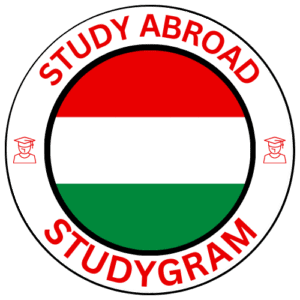
Mixed marriages sit at the intersection of personal relationships and broader social dynamics, offering a lens through which to view identity formation and community engagement in Hungary and beyond. In this article we explore how Eötvös Loránd University’s research group, Momentum MIXED, studies these unions and what implications the findings have for students, educators, and policy makers.
Why Mixed Marriages Matter to Social Dialogue in Hungary
Mixing ethnic, linguistic, or religious backgrounds within a family is not merely a private matter. It signals how society negotiates boundaries, affirms coexistence, or, at times, highlights tensions. For Hungary, a country with a strong national narrative and a complex minority situation, understanding mixed marriages helps gauge the extent of social integration and the health of minority communities.
Identity as a Dynamic Construction
Identity in mixed families is layered and fluid. Children grow up navigating multiple cultural codes, learning to switch languages, and internalizing norms from two or more traditions. This duality can function as a bridge, encouraging communication across groups, or it can create feelings of belonging to neither side. Studying these patterns offers concrete evidence of how identity is negotiated day‑to‑day.
Reflections on Historical Legacies
The post‑World War II era, especially the breakup of Yugoslavia and the subsequent ethnic conflicts, altered the political landscape for mixed families in the former Yugoslav states. In Hungary, the Cold War period and the early 1990s transition shaped how the majority perceived minority partners and how those minorities responded to institutional pressures.
Historical Context and Contemporary Dynamics
Historically, some regimes used mixed marriages as symbols of unity or as strategic tools to erode ethnic boundaries. In socialist Yugoslavia, for instance, intermarriage was promoted to showcase a harmonious, supra‑national identity. Later, the 1990s wars dismantled that narrative, leaving mixed families stranded amid conflicting loyalties.
Regional Variations: Hungary vs. Former Yugoslavia
In the former Yugoslavia, the long tradition of multi‑ethnic coexistence meant that many families already blended cultures. In contrast, Hungary’s national homogenization has made mixed marriages more visible and sometimes contested. The sociopolitical context influences how families implement daily practices like language use, holiday observances, and religious participation.
Contributing Factors in Daily Life
Three main elements shape the experience of mixed families: religion, economic circumstances, and social acceptance. Each interplays, shifting the family’s balance of power, expectations, and sense of belonging.
Religion and Cultural Rituals
Differences in faith—Catholic versus Orthodox, secular versus religious—become arenas for negotiation. Couples might combine traditions, create new rituals, or decide to practice one faith to simplify household dynamics. The level of integration often correlates with the flexibility of local religious communities.
Economic Stability and Identity Politics
Financial well‑being can either cushion cultural differences or amplify them. In times of hardship, such as the 1990s economic crisis, families might gravitate toward the majority culture for support, whereas a stable environment permits more experimentation.
Acceptance of the Wider Community
Social perception drives self‑presentation. If neighbors, schools, or workplaces openly acknowledge mixed family structures, the family can maintain plural identities. Conversely, subtle exclusions—being stared at when arriving at a cultural event—pressure families to conform.
Gendered Roles within Mixed Marriages
Gendered expectations influence how responsibilities divide. Women commonly become the cultural gatekeepers, managing language transmission and daily traditions. Men often confront external pressure to adopt the majority language as a practical matter for integration.
Women: The “Invisible Burden” of Mediating
Research shows that partners in minority groups often bear the burden of preserving minority identity inside the home. This role can be rewarding but also demanding, especially when they confront community pressure to assimilate.
Men: Navigating Visible Integration
Men may face expectations to adopt the majority language to secure employment, while also dealing with partners’ domestic roles. This dynamic can result in asymmetric power balances, affecting decision‑making around education and cultural practices.
Children’s Experience: Enrichment or Dilemma?
Having two or more cultural lenses provides economic and social enrichment. Children acquire multiple languages, broadened worldviews, and risk‑looking at diversity as a resource. Yet they also confront external expectations to belong to a particular community, especially in school settings.
Negotiating Hybrid Identities
Hybrid identity formation is a lifelong process. Children may exhibit different behavior at home versus school, reflecting the pragmatic adaptation to each social environment. Understanding these patterns helps educators design inclusive curricula that respect diversified cultural backgrounds.
Future Directions in Mixed Marriages
Today’s younger generation chooses partners more on shared values than ethnic background. Mobility and digital connectivity produce more fluid identities, and many families opt for multilingual upbringing and international education. These patterns suggest a shift from being “between two worlds” to existing in multiple worlds simultaneously.
Applying Research to Practice
Momentum MIXED’s findings aim to feed both academic discourse and public policy. The group is developing educational materials on multiculturalism, and a digital “Mixed Marriages Map” will make case studies readily available to teachers, parents, and civic organizers.
Educational Programs and Community Outreach
By integrating research insights into school curricula, educators can cultivate an environment where mixed identities are celebrated rather than critiqued. Community organizations can use the data to support families facing discrimination or identity stresses.
Policy Implications
Policy makers can use this information to refine minority rights legislation, encourage inclusive public services, and support cross‑cultural dialogue initiatives.
Conclusion
Mixed marriages offer a micro‑cosm for observing identity negotiation, social solidarity, and political dynamics. At Eötvös Loránd University, the Momentum MIXED project transforms personal narratives into actionable knowledge, informing educational practice and shaping inclusive dialogues across Hungary and the Central‑Eastern European region.
—
Explore degree programs in sociology and cultural studies at Eötvös Loránd University.
Learn more about student support services.
Visit the Mixed Marriages Map to see real‑world stories.
Request more information about research collaborations.
—

